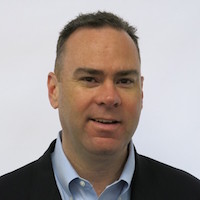It’s no secret that health care costs are being felt across the country – and that affording quality health care has become a universal issue.
Employees are becoming more responsible for a larger portion of out-of-pocket costs. From 2006 to 2016, the total value of employee contributions rose 78%, and it is unlikely that this trend will end any time soon.
A recent Kaiser survey revealed that 73% of those reporting problems paying medical bills are cutting back spending on food, clothing or basic household items just to pay for health-related services. In fact, HealthView Services is projecting a nearly 6% average annual increase in HMO group plan premiums in the near future.
But recent findings suggest that a combination of new technology and human interaction could be a solution to the rising cost of health care – and 401(k) companies can benefit as well.
Across all industries, 401(k) plan sponsors share one common goal: to reduce medical expenditures on participants. Regardless of whether companies are actively engaged in measuring the success of their plans – or whether they even work at all – wellness has expanded to an $8 billion industry and is expected to grow by 7.8% through 2021.
Perhaps the greatest determining factor in this shared objective is how to incentivize people to adopt positive behaviors and follow prescribed treatments. Individuals are more likely to adopt long-term behavioral changes if the program is easy to integrate into their daily routines. Data shows that disease management programs, virtual care and consistent follow-up can make a difference in patient wellness. However, getting people to adhere to a long-term behavior management program has still been challenging. Even something as simple as getting people to properly follow their prescription drug protocol can be a difficult task. Recent surveys reveal 50% of Americans diagnosed with a chronic condition do not take their prescribed medication after six months. To be successful, initiatives need to include financial incentives and mobile applications with user-friendly and accessible interfaces (similar to Facebook or Uber) that will motivate people to save.
401(k) recordkeepers seeking differentiation in a competitive field can offer wellness solutions that lead to health cost savings set to be allocated to a retirement plan, like a 401(k). With a strategy like this, everyone benefits: participants are healthier, spend less on health care, and increase their savings; the plan sponsor spends less on insurance and has healthier, more productive employees; and the recordkeeper adds a key differentiator and increases AUM.
 Michael Daley (right) is a Product Marketing Manager at HealthView Services & HealthyCapital. Tom McKenna (below) is Vice President – Business Development at Healthview Services.
Michael Daley (right) is a Product Marketing Manager at HealthView Services & HealthyCapital. Tom McKenna (below) is Vice President – Business Development at Healthview Services.
HealthyCapital, a joint venture of HealthView Services and the Mercy health system, provides 401(k) recordkeepers with user-friendly software that links physician-recommended behavior modification to individual participants, seeking to reduce health expenses, increase retirement savings, and extend life expectancy.

